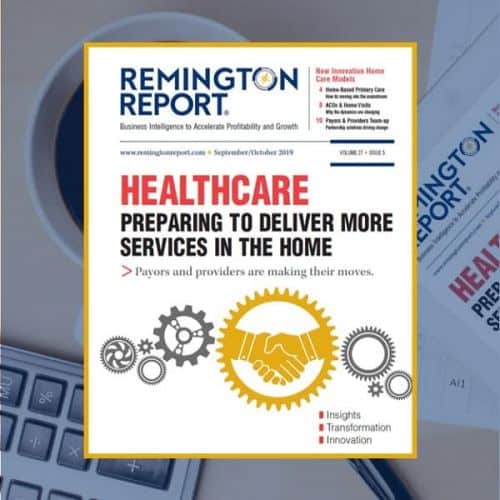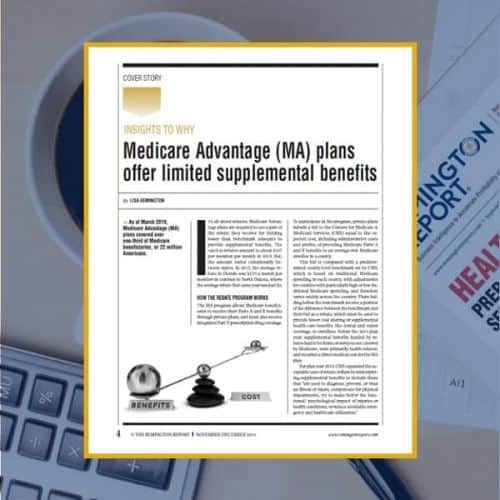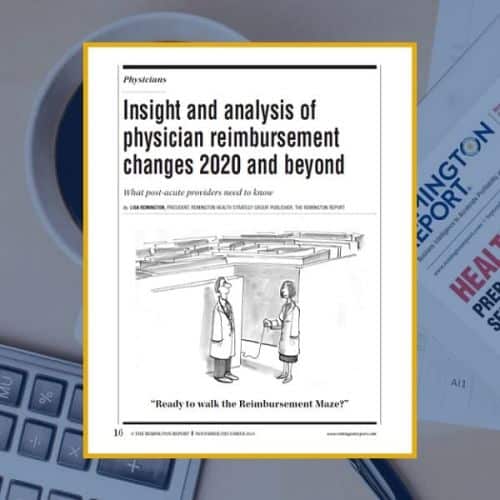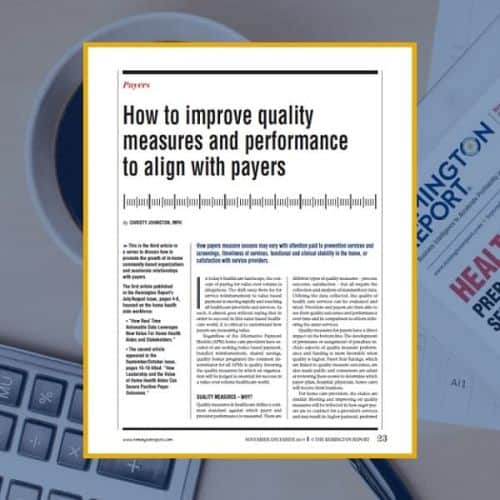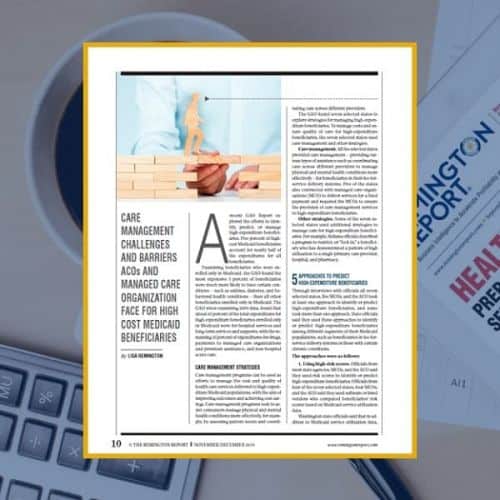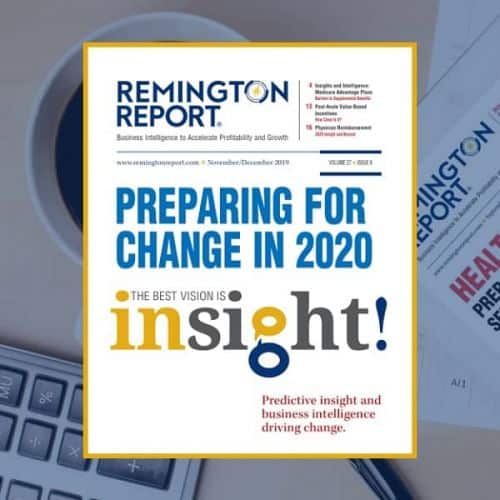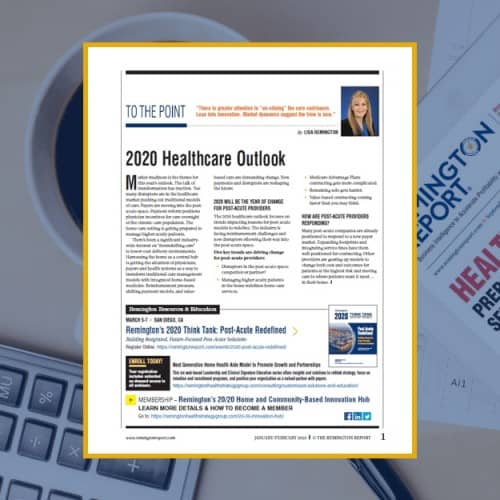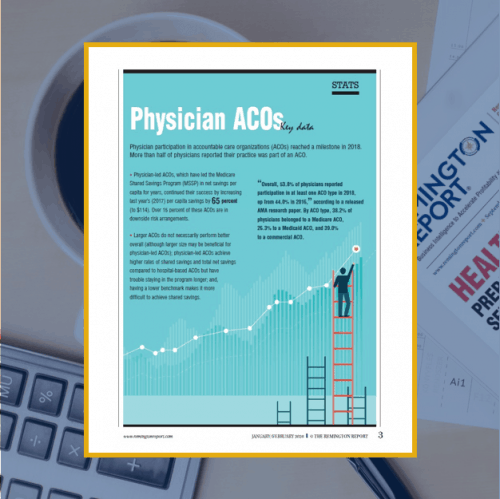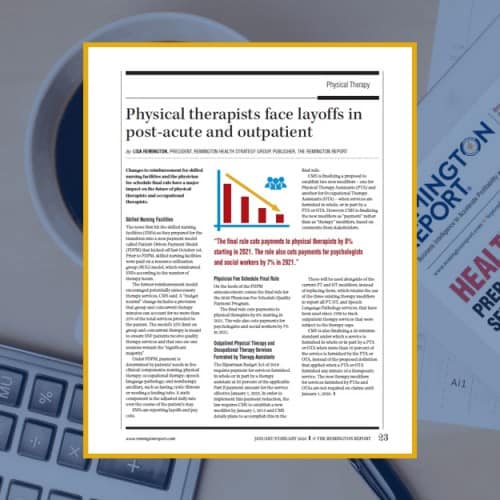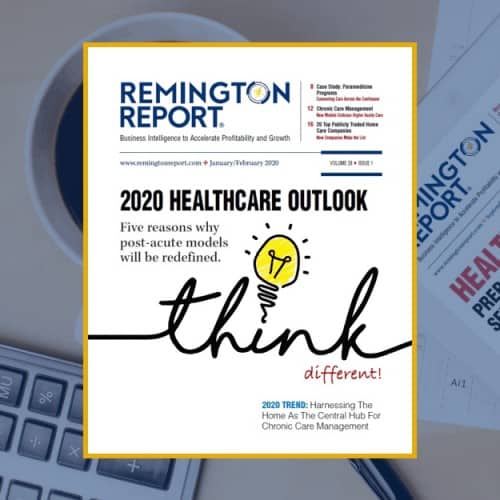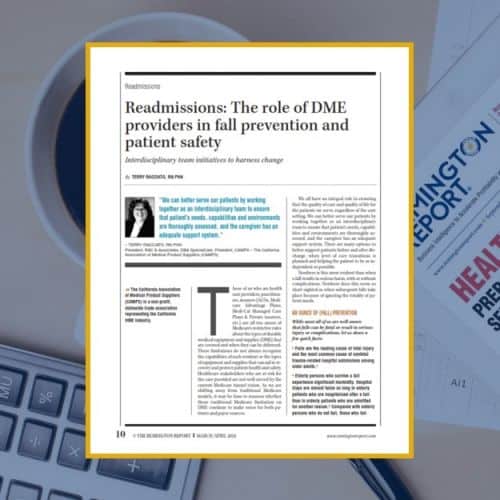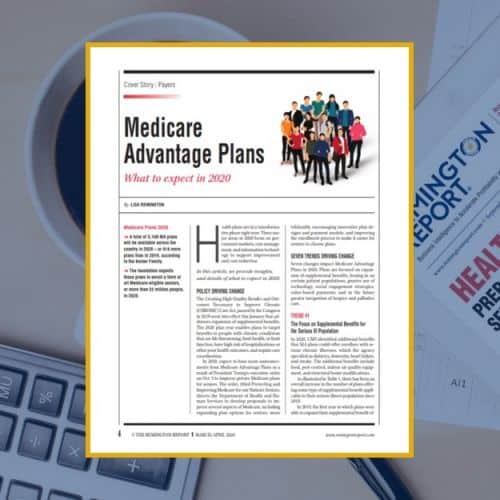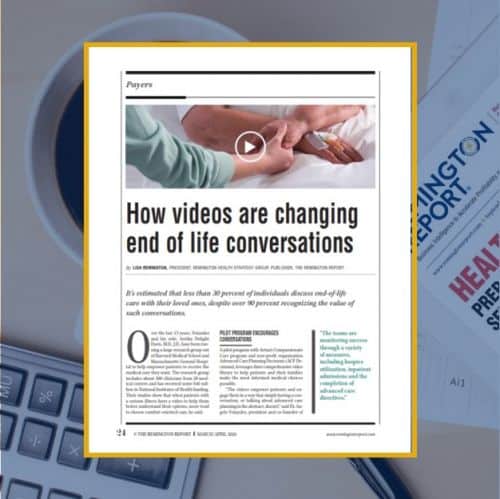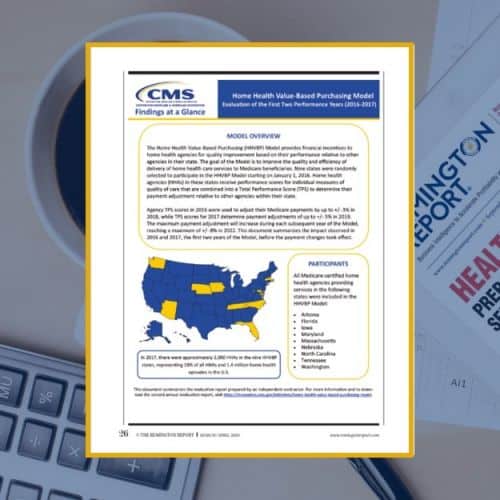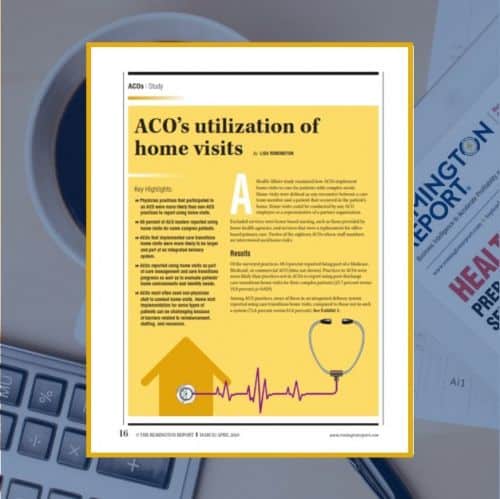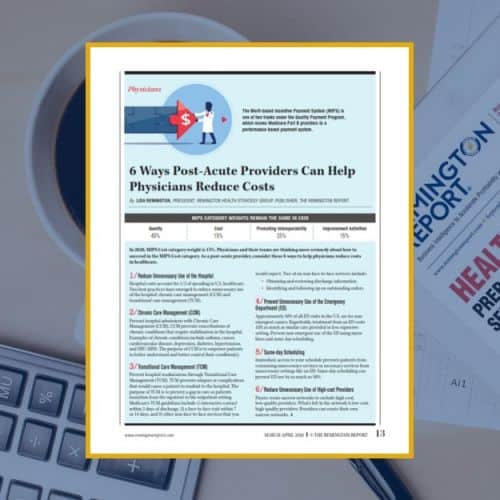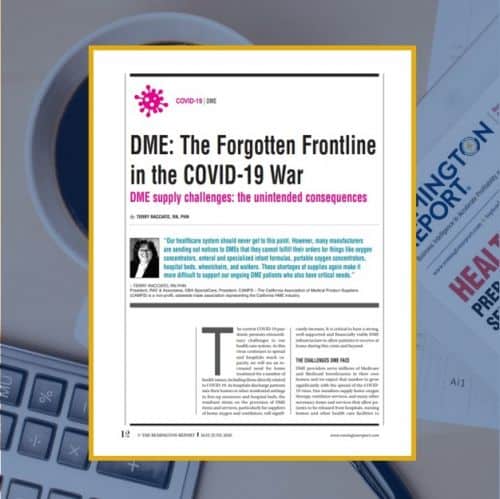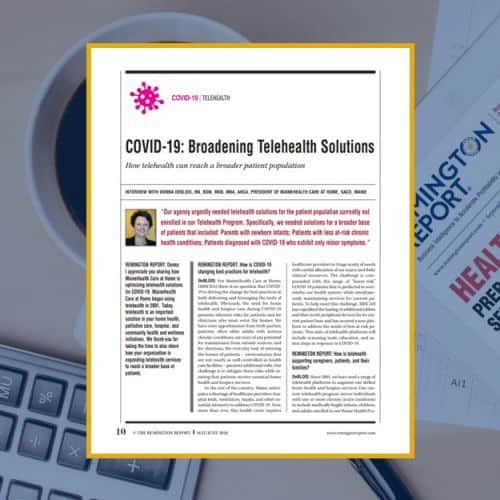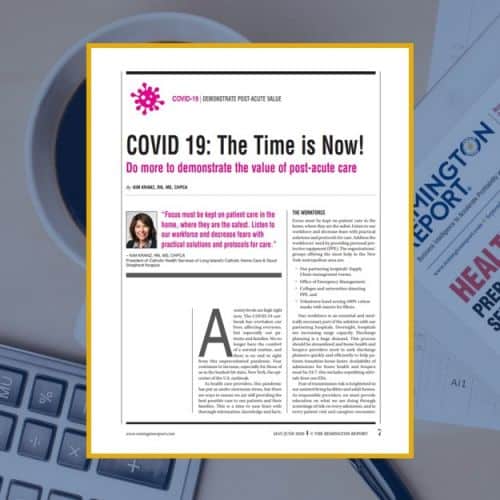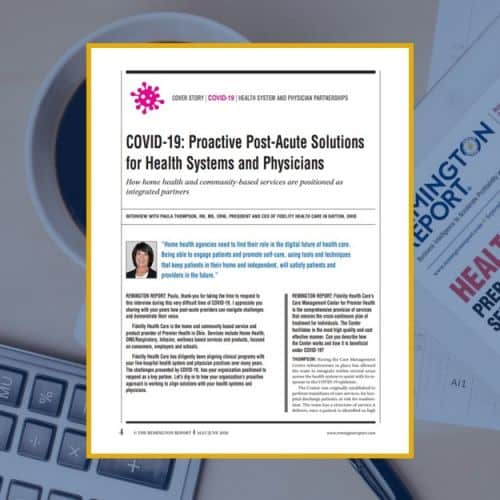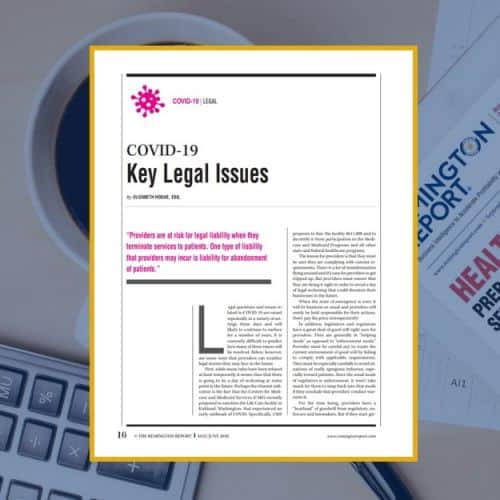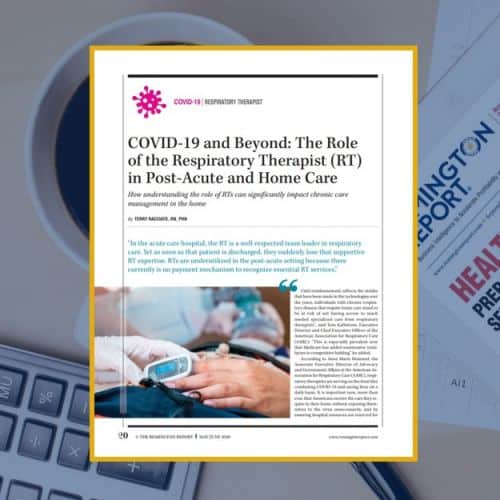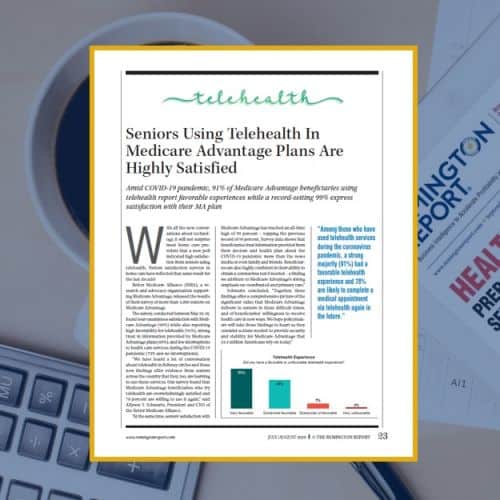-
 Adam Boehler left his position as the deputy administrator and director of CMS and Medicaid Innovation (CMMI). His position at CMMI was important to home and community-based providers. His work created models to pay primary care physicians based on value, tie prices of drugs administered in a doctor's office to the amount other countries pay, and a drive to move?more people to get dialysis in their homes. This article is free to 1-Year Classic and 2-Year Premium subscribers.
Adam Boehler left his position as the deputy administrator and director of CMS and Medicaid Innovation (CMMI). His position at CMMI was important to home and community-based providers. His work created models to pay primary care physicians based on value, tie prices of drugs administered in a doctor's office to the amount other countries pay, and a drive to move?more people to get dialysis in their homes. This article is free to 1-Year Classic and 2-Year Premium subscribers. -
 The Office of Inspector General (OIG) of the U.S. Department of Health and Human Services (HHS), the primary enforcer of fraud and abuse prohibitions, has issued its annual recommendations that, if implemented, will likely affect HHS programs positively in terms of cost savings, program effectiveness and efficiency, and public health and safety. This article is free to 1-Year Classic and 2-Year Premium subscribers.
The Office of Inspector General (OIG) of the U.S. Department of Health and Human Services (HHS), the primary enforcer of fraud and abuse prohibitions, has issued its annual recommendations that, if implemented, will likely affect HHS programs positively in terms of cost savings, program effectiveness and efficiency, and public health and safety. This article is free to 1-Year Classic and 2-Year Premium subscribers. -
 The first two years of the Comprehensive Care for Joint Replacement (CJR) saved Medicare more than?$1,00 per episode. CJR, a five-year Medicare program rolled out in 2016, pays participating?hospitals for hip and knee replacements by episode of care: from admission to 90 days post discharge. This article is free to 1-Year Classic and 2-Year Premium subscribers.
The first two years of the Comprehensive Care for Joint Replacement (CJR) saved Medicare more than?$1,00 per episode. CJR, a five-year Medicare program rolled out in 2016, pays participating?hospitals for hip and knee replacements by episode of care: from admission to 90 days post discharge. This article is free to 1-Year Classic and 2-Year Premium subscribers. -
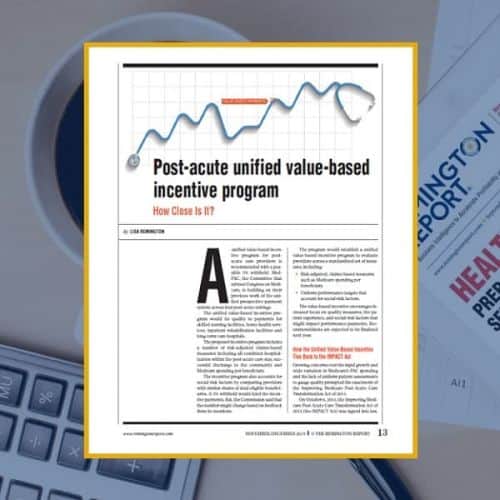 A unified value-based incentive program for post-acute care providers is recommended with a possible 5% withhold. Med-PAC is building on their previous work of the unified prospective payment system across four post-acute settings. This article is free to 1-Year Classic and 2-Year Premium subscribers.
A unified value-based incentive program for post-acute care providers is recommended with a possible 5% withhold. Med-PAC is building on their previous work of the unified prospective payment system across four post-acute settings. This article is free to 1-Year Classic and 2-Year Premium subscribers. -
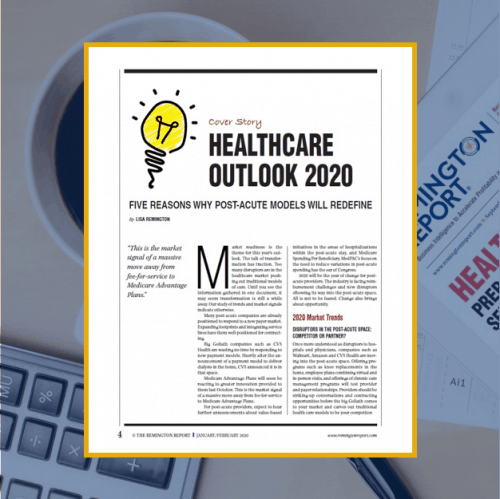 Market readiness is the theme for this year?s outlook. The talk of transformation has traction. Too many disruptors are in the healthcare market pushing out traditional models of care. Until you see the information gathered in one document, it may seem transformation is still a while away. Our study of trends and market signals indicate otherwise. This article is free to 1-Year Classic and 2-Year Premium subscribers.
Market readiness is the theme for this year?s outlook. The talk of transformation has traction. Too many disruptors are in the healthcare market pushing out traditional models of care. Until you see the information gathered in one document, it may seem transformation is still a while away. Our study of trends and market signals indicate otherwise. This article is free to 1-Year Classic and 2-Year Premium subscribers. -
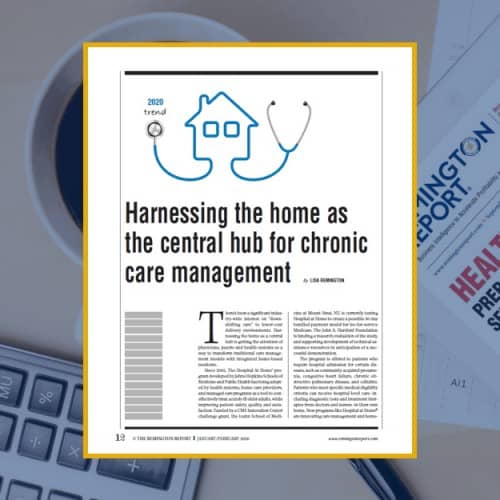 There?s been a significant industry-wide interest on ?downshifting care? to lower-cost delivery? environments. Harnessing the home as a?central hub is getting the attention of physicians, payers and health systems as a way to transform traditional care management models with integrated home-based medicine. This article is free to 1-Year Classic and 2-Year Premium subscribers.
There?s been a significant industry-wide interest on ?downshifting care? to lower-cost delivery? environments. Harnessing the home as a?central hub is getting the attention of physicians, payers and health systems as a way to transform traditional care management models with integrated home-based medicine. This article is free to 1-Year Classic and 2-Year Premium subscribers. -
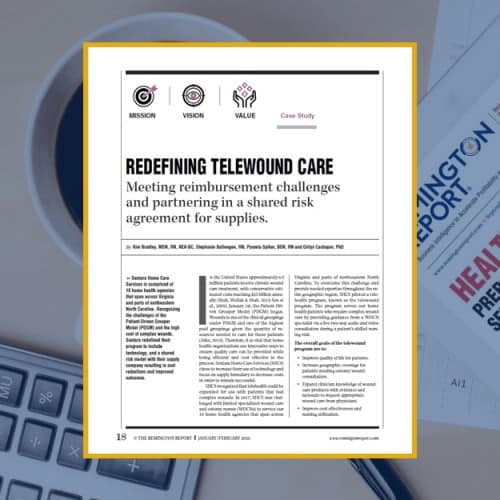 Sentara Home Care Services is comprised of 10 home health agencies that span across Virginia and parts of northeastern North Carolina. Recognizing the challenges of the Patient-Driven Grouper Model (PDGM) and the high cost of complex wounds, Sentara redefined its program to include technology, and a shared risk model with their supply company resulting in cost reductions and improved outcomes. This article is free to 1-Year Classic and 2-Year Premium subscribers.
Sentara Home Care Services is comprised of 10 home health agencies that span across Virginia and parts of northeastern North Carolina. Recognizing the challenges of the Patient-Driven Grouper Model (PDGM) and the high cost of complex wounds, Sentara redefined its program to include technology, and a shared risk model with their supply company resulting in cost reductions and improved outcomes. This article is free to 1-Year Classic and 2-Year Premium subscribers. -
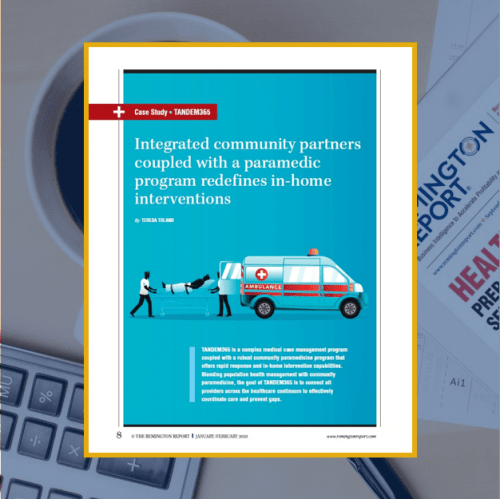 TANDEM365 is a complex medical case management program coupled with a robust community paramedicine program that offers rapid response and in-home intervention capabilities. Blending population health management with community paramedicine, the goal of TANDEM365 is to connect all providers across the healthcare continuum to effectively coordinate care and prevent gaps. This article is free to 1-Year Classic and 2-Year Premium subscribers.
TANDEM365 is a complex medical case management program coupled with a robust community paramedicine program that offers rapid response and in-home intervention capabilities. Blending population health management with community paramedicine, the goal of TANDEM365 is to connect all providers across the healthcare continuum to effectively coordinate care and prevent gaps. This article is free to 1-Year Classic and 2-Year Premium subscribers. -
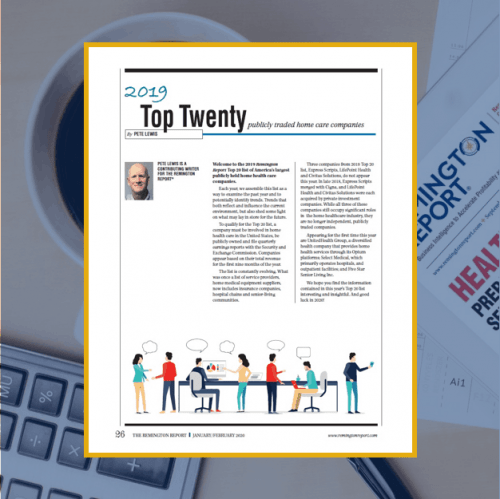 Each year, we assemble this list as a way to examine the past year and to potentially identify trends. Trends that both reflect and influence the current environment, but also shed some light on what may lay in store for the future. This article is free to 1-Year Classic and 2-Year Premium subscribers.
Each year, we assemble this list as a way to examine the past year and to potentially identify trends. Trends that both reflect and influence the current environment, but also shed some light on what may lay in store for the future. This article is free to 1-Year Classic and 2-Year Premium subscribers. -
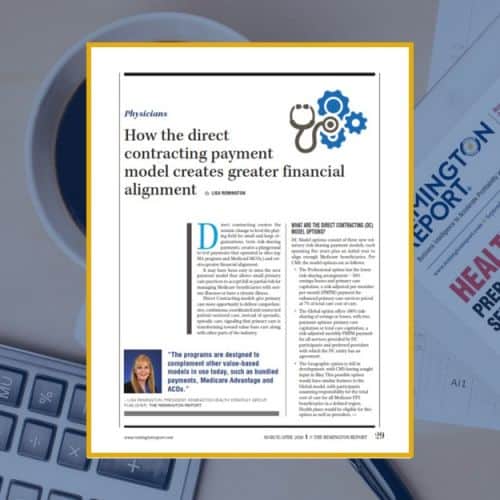 Direct contracting creates the seismic change to level the playing field for small and large organizations, tests risk-sharing payments, creates a playground to test payments that operated in silos, and creates greater financial alignment. This article is free to 1-Year Classic and 2-Year Premium subscribers.
Direct contracting creates the seismic change to level the playing field for small and large organizations, tests risk-sharing payments, creates a playground to test payments that operated in silos, and creates greater financial alignment. This article is free to 1-Year Classic and 2-Year Premium subscribers.
